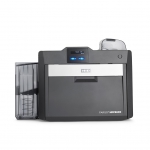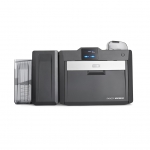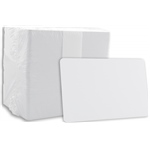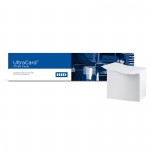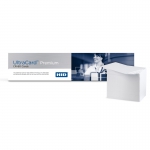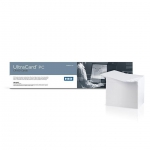- Free Shipping for orders over $249*
- +1 800-943-2341
- Aptika.com
- Aptika.ca
- Currency: USD
My Account
Understanding the differences between Direct-to-Card and Retransfer printing
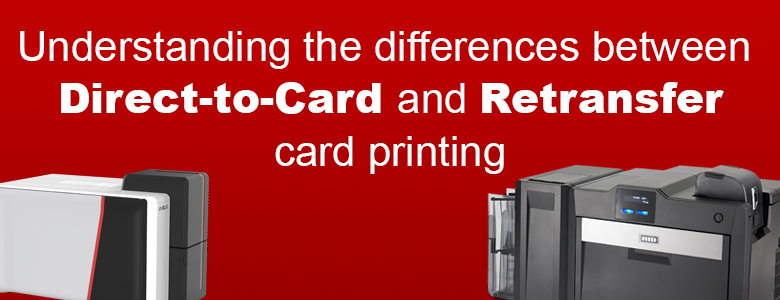
The variety of card printers available can be overwhelming for organizations aiming to produce high-quality printed cards and IDs. However, understanding that each print technology is unique and grasping the fundamentals of how they work is crucial. This knowledge will empower you to make informed decisions when selecting the right solution for your needs.
This document provides clear and straightforward answers to Frequently Asked Questions about DTC (Direct-to-Card) and Retransfer card printing methods. These questions and answers will help you understand the main differences between these two printing methods and the potential advantages of one printing method over another, based on your specific needs and preferences.
Table of Contents
- What is Direct-to-Card (DTC) printing?
- What is Retransfer Printing?
- What is HDP printing?
- Is there any difference in the card's print area when comparing DTC and Retransfer printing methods?
- What is the difference in print quality and resolution when comparing DTC and Retransfer printing methods?
- Does the printing method affect printhead wear?
- What are the recommended card types for each printing method?
- Are cards printed via Retransfer inherently more durable and secure than those printed via Direct-to-Card?
- What about technology cards with embedded electronics?
- What is the difference in price between DTC printers and Retransfer printers?
- What type of product warranty is offered for DTC printers versus Retransfer printers?
- How do I determine which printing method is best for my needs?
What is Direct-to-Card (DTC) printing?
Using a Direct-to-Card (DTC) printing method, text and images are printed directly to the card's surface through heat and pressure. This method is called "Direct-to-Card" printing because the printhead directly touches the card's surface during the printing process.
What is Retransfer Printing?
Using a Retransfer (Reverse Transfer) printing method, text and images are first printed onto a clear film. The film is then "transferred" or fused to the card's surface through heat and pressure. Unlike Direct-to-Card (DTC) printing methods, the printhead never directly contacts the card surface.
What is HDP printing?
HID Global's Retransfer printing method is called HDP (High Definition Printing). Other brands call it Retransfer, but they use the same technology.
Is there any difference in the card's print area when comparing DTC and Retransfer printing methods?
Yes. The total print area of the finished card is slightly smaller with DTC printing than with Retransfer printing. DTC printing provides what is referred to as "edge-to-edge" coverage, where images and text can be printed just up to the edges of the card. Because there is a slight margin between the card's edge and the print ribbon, finished cards usually have a slight blank/white border at the outer edges.On the other hand, Retransfer printers print over the entire card's surface, known as 'over-the-edge' coverage. This means that with Retransfer printing, there is no blank border at the outer edges of finished cards, as this method provides complete card coverage. This understanding can help you decide which method is more suitable for your specific needs.
What is the difference in print quality and resolution when comparing DTC and Retransfer printing methods?
Retransfer printing allows for superior-quality finished cards, as images are typically more vibrant and sharper, and text and barcodes are generally bolder and crisper than with DTC printing. The standard resolution for most DTC printers is 300 dpi (dots per inch), whereas 600 or greater dpi is more readily available on Retransfer printer models.
Does the printing method affect printhead wear?
Yes. Because the printhead comes in direct contact with the card surface when using a DTC printing method, printhead wear is more likely and may require printhead replacement over the printer's life. Having direct contact with the card surface, DTC printheads can accumulate dust or debris, which may affect printed card quality and cause damage to the printhead.Conversely, when printing via Retransfer, the printhead never comes in contact with the card surface. As a result, there is little opportunity for the printhead to become damaged or worn. Retransfer printheads tend to outlast those used for DTC printing. They are also less likely to accumulate dust and damage, as they are never in direct contact with the card surface during printing.
What are the recommended card types for each printing method? What other factors should be considered when choosing a card type?
DTC Card Compatibility and Card Construction Recommendations
Although all card types (PVC, PVC/PET, or Polycarbonate (PC) cards) are compatible with DTC printers, PVC cards are recommended for cost consideration. If you are laminating your cards, please note that due to the heat applied during the lamination process, PVC-only cards are not recommended, as the lamination process may cause cards to warp. One should also consider the desired card lifespan when selecting the card construction that will best serve your program's needs:
- PVC cards have a typical lifespan of 1 year and are ideal for shorter-term applications such as gift/loyalty cards, temporary ID/visitor ID, or contractor ID badges
- PVC/PET multi-layer composite construction cards have a typical lifespan of 3-4 years and are ideal for slightly longer-term applications such as debit/credit financial cards
- PVC/PET or composite cards improve the card's resistance to UV light, chemicals, and general wear-and-tear compared to PVC cards
- Polycarbonate (PC) cards are not recommended for printing on DTC printers.
Retransfer Card Compatibility and Card Construction Recommendations
Due to the heat applied during the Retransfer printing process (and during the lamination process if you will be laminating your cards), using PVC-only cards is not recommended, as the Retransfer process may cause cards to warp. A more resilient card, such as a PVC/PET or Polycarbonate (PC) card, is recommended for best results. One should also consider the desired card lifespan when selecting the card construction that will best serve your program's needs:
- PVC/PET multi-layer composite construction cards have a typical lifespan of 3-4 years and are ideal for slightly longer-term applications such as debit/credit financial cards.
- PVC/PET or composite cards improve the card's resistance to UV light, chemicals, and general wear-and-tear over PVC cards
- Polycarbonate (PC) is more resistant to heat and high humidity and has an expected lifespan of 5 to 10 years, making it an ideal card type for applications such as Driver's Licenses and Corporate Employee/Physical Access badges.
- Polycarbonate (PC) cards support laser engraving, which creates a permanent, unalterable card.
Are cards printed via Retransfer inherently more durable and secure than those printed via Direct-to-Card?
Yes. Barring any additional visual security features and overlaminates, Retransfer printed cards are inherently more durable than DTC printed cards because the Retransfer film or clear film (also known as InTM film in our industry) that is applied during the printing process acts as a natural and durable barrier between text/ images and the outside world. Cards produced by Retransfer printing solutions are also more secure than other cards because they are inherently tamper-evident. If a counterfeiter tries to peel apart the layers (peel the printed film from the card's surface), the image essentially destroys itself, rendering the card unusable.
What about technology cards with embedded electronics? Is one method recommended over another?
Typically, cards that contain embedded electronics are not recommended for DTC printing. This is because the ridges formed by embedded electronics within the card can affect image quality. Moreover, embedded electronics can damage the DTC printhead because the printhead comes in direct contact with the card surface.On the other hand, Retransfer printing is highly recommended for cards that contain embedded chips or antennae for best image quality results. Because the Retransfer film is fused to the surface of proximity or smart cards, it naturally conforms to ridges and indentations formed by the embedded electronics inside the card. As a result, images and text printed on the card are smooth, crisp, and do not suffer irregularities. As a bonus, the printhead never comes in contact with the uneven card surfaces formed by underlying embedded electronics, so there is virtually no potential for printhead damage.
What is the difference in price between DTC printers and Retransfer printers?
DTC printers are generally less expensive than Retransfer printers. Consumables costs are also lower as no additional film is required when printing directly to the card.Retransfer printers are generally more expensive than DTC printers. Additional consumables (Retransfer or clear film) are required, which can increase overall cost-per-card.
What type of product warranty is offered for DTC printers versus Retransfer printers?
Direct-to-Card printers print directly to the card's surface, which increases the potential for damage; therefore, warranties may be more limiting for DTC printers than Retransfer printers. It would help if you inquired with your provider regarding available product warranties.
How do I determine which printing method is best for my needs? What should I consider?
DTC Printing Considerations
DTC printing offers exceptional value when paired with the proper organization, card program, and physical card type. DTC printers are excellent choices when:
- Initial printer hardware investment is limited.
- Cost-per-card is of utmost concern.
- Card design is not over-the-edge; you have a white gab around your design.
- Desired card longevity does not exceed 4-5 years.
- Limited or no electronics will be embedded within the cards.
Retransfer Printing Considerations
Retransfer printing allows organizations to take advantage of many features not available with DTC printing and is generally best suited for card programs when:
- Higher-definition printing is required for very small or complex characters.
- Over-the-edge printing is desired.
- Card durability and longevity are of utmost concern.
- Tamper-evident cards are desired.
- Cards will contain embedded electronics (chips or antennae).
Tagged on: difference, dtc, direct-to-card, retransfer, hdp, reverse transfer
